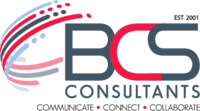What are the benefits of optical fiber communication system?
If you need to transport large quantities of data (think gigabytes, terabytes and beyond) over a long distance, then the implementation of a fiber optic communication system is not only advised but likely necessary. This is due to the way that fiber optics work, as an almost lossless system that works at high speeds. It's particularly efficient when transmitting data, voice, video or telemetry internationally.
How does fiber optic communication work?
Unlike other forms of communication systems, this particular set-up transmits signals via light that passes from one point to the other through cables. The sending end emits the light, which travels down the fiber optic cable to be transferred back into electronic data by the receiving party. Additionally, unlike alternative systems such as copper, a fiber optic communication system uses circuitry that both transmits and receives, as well as detector devices and a light source.
A breakdown of the basic fiber optic communication system elements
Light Sources: Fiber-optic communication systems are comprised of many different parts. The first major part is the compact light source, which emits the light used to pass data from point-to-point. These can come in differing forms dependent on needs in terms of range, speed, and cost, but in any fiber optic system, the light emitter is key.
Optical Fiber: A fiber-optic system also needs a low-loss optical fiber, to transfer the light. With layers of protection the light, and thus data, lost through transfer is kept to a minimum. This makes fiber optic data transfer reliable while retaining the speed kept from the quick light-based transmissions.
Photodetectors: A photodetector is required to convert the light signals back into electrical charges. A computer can't present light as data, so whilst the rest of the system is good at transferring data the photodetector is vital to allow any computer system actually to present the information.
Connectors: Connectors are used to couple the optical fibers to the light source and photodetector. They precisely align the cores of the fibers to minimize insertion loss and maximize optical power transmission between the fibers. Common connector types used in fiber optic communications include ST connectors, SC connectors, FC connectors, and LC connectors. Each connector has its own design, size, and connection mechanism, but all play a vital role in efficiently transmitting light between linked fiber optic cables.
Multiplexing Techniques: Multiplexing techniques allow multiple signals to be transmitted over a single optical fiber simultaneously. Wavelength division multiplexing (WDM) assigns each signal a unique wavelength that can be combined and transmitted through the fiber together without interference. Time division multiplexing (TDM) interleaves different signals by allocating each one a time slot to transmit a short burst of data. The receiver reconstructs the individual signals based on the timing. Multiplexing greatly expands the information capacity of fiber optic systems.
Optical Amplifiers: Optical amplifiers boost the power and strength of optical signals as they propagate through the fiber optic network to compensate for losses. Erbium-doped fiber amplifiers (EDFAs) are commonly used to amplify signals in the 1550 nm band. They utilize a pump laser and erbium-doped fiber to provide gain. Raman amplifiers rely on stimulated Raman scattering and can provide distributed amplification over wide bandwidths. Amplifiers enable signals to be transmitted over longer distances without degradation.
Optical Switches: Optical switches allow signals to be dynamically routed within fiber networks. Micro-electro-mechanical system (MEMS) switches use tiny physically moving mirrors to precisely steer optical beams. Liquid crystal switches utilize voltages to align liquid crystal molecules and change light transmission. Optical switches play key roles in network flexibility, protection, and restoration by diverting signals as needed.
The effective collaboration of compact light sources, low-loss optical fibers, and photodetectors ensures seamless fiber optic communication. Light sources emit data-carrying signals, optical fibers transmit them with minimal loss, and photodetectors convert them back into usable data. This synergy enables reliable, high-speed, and cost-efficient communication over fiber-optic networks.
Want to optimize your business? Choose BCS Consultants
We put your employees and your clients at the forefront of finding the best solutions for your business. With knowledgeable and friendly team members coupled with the latest technological advances, BCS Consultants can ensure your company boasts the best business plan that it can possibly have. All of our services are fully integrated and are comprised of nothing but the best audiovisual, networking, security and communication solutions.

